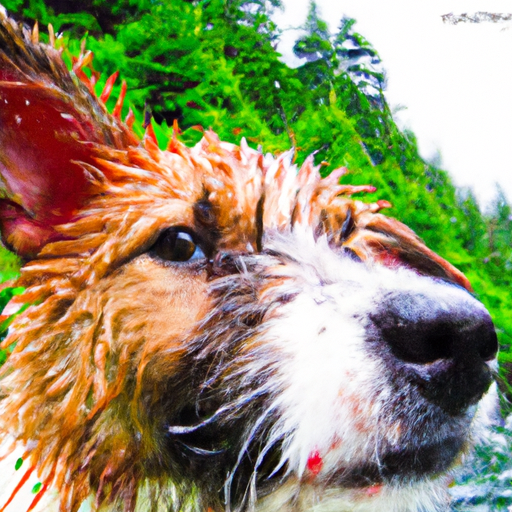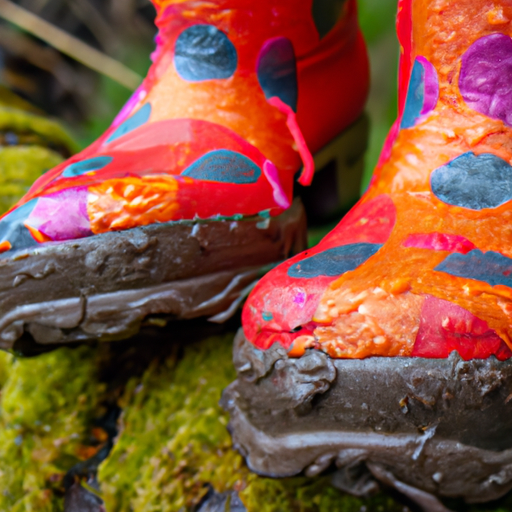If you have a furry friend who is going through the adolescent stage, it's important to be aware of the common health issues they may face. From skin problems to dental care, understanding how to properly care for your adolescent dog can help ensure their well-being and happiness. In this article, we will explore some of these common health issues and provide tips on how to address them, so you can keep your beloved canine companion healthy and thriving during this crucial period of their life.
1. Vaccinations
1.1. Understanding the importance of vaccinations
Vaccinations are a crucial aspect of keeping your adolescent dog healthy. They help to prevent various diseases that can be harmful or even fatal to your pet. Vaccines work by stimulating your dog's immune system to produce protective antibodies against specific viruses and bacteria. By vaccinating your dog, you not only protect their health but also contribute to the overall wellbeing of your community by preventing the spread of contagious diseases.
1.2. Common vaccinations for adolescent dogs
There are several vaccinations that are highly recommended for adolescent dogs. These include the core vaccines, which are necessary for all dogs, regardless of their lifestyle. Core vaccines typically protect against diseases like distemper, parvovirus, adenovirus, and rabies. These diseases can cause severe illness and have high mortality rates.
In addition to core vaccines, there are non-core vaccines that may be necessary depending on your dog's lifestyle. These vaccines target diseases such as leptospirosis, Lyme disease, and kennel cough. Non-core vaccines are recommended for dogs that may be exposed to these diseases due to their living environment or activities.
1.3. Recommended vaccination schedule
It is important to follow a proper vaccination schedule to ensure that your adolescent dog receives the necessary immunizations at the right time. The exact schedule may vary depending on factors such as your dog's breed, location, and overall health. Generally, puppies receive a series of vaccinations starting at around 6-8 weeks of age, with boosters given every 3-4 weeks until they are around 16-20 weeks old.
Once the initial vaccination series is completed, your dog will need regular booster shots to maintain protection. The frequency of boosters will depend on the specific vaccines used, but many core vaccines require boosters every 1-3 years. Your veterinarian will provide guidance on the appropriate vaccination schedule for your adolescent dog based on their individual needs.
2. Spaying and Neutering
2.1. Benefits of spaying and neutering
Spaying (for females) and neutering (for males) are important surgical procedures that can have numerous benefits for your adolescent dog. Spaying female dogs helps prevent unwanted pregnancies and reduces the risk of uterine infections, mammary tumors, and certain types of cancers. Neutering male dogs can help prevent behaviors such as roaming, aggression, and urine marking, as well as reduce the risk of testicular tumors and some prostate problems.
2.2. Timing for spaying and neutering
The optimal time for spaying or neutering your adolescent dog may vary depending on several factors, including breed, size, and overall health. In general, most veterinarians recommend spaying or neutering between 6 and 9 months of age. However, certain large breed dogs may benefit from waiting until they are closer to 1 year old to ensure proper growth and development.
It is important to discuss the timing of spaying or neutering with your veterinarian, as they will take into account your dog's individual needs and consider any potential risks or benefits associated with the timing of the procedure.
2.3. Potential risks and complications
While spaying and neutering have many benefits, it is essential to understand that there are potential risks and complications associated with these procedures. Like any surgery, there is always a small risk of complications such as infection, bleeding, or adverse reactions to anesthesia. However, the overall incidence of these complications is relatively low, and the benefits of spaying or neutering often outweigh the risks.
Your veterinarian will discuss the potential risks and benefits with you and provide appropriate pre-surgical care and post-operative instructions to minimize any potential complications. It is important to follow these instructions carefully and monitor your dog closely after the procedure to ensure a smooth recovery.
3. Parasite Control
3.1. Types of common parasites in adolescent dogs
Adolescent dogs are particularly susceptible to various parasites, both internal and external. Internal parasites include worms such as roundworms, hookworms, whipworms, and tapeworms. These can cause gastrointestinal issues, poor growth, and other health problems if left untreated. External parasites, on the other hand, include fleas, ticks, and mites, which can cause discomfort, skin irritation, and transmit diseases such as Lyme disease or heartworm.
3.2. Regular deworming and flea/tick prevention
To effectively control parasites in your adolescent dog, regular preventive measures are essential. Regular deworming is necessary to eliminate and prevent internal parasites. Your veterinarian will advise on the appropriate deworming schedule for your dog based on their risk factors and exposure.
In addition to deworming, it is important to use a reliable flea and tick prevention product to protect your dog from these external parasites. These products come in various forms such as topical treatments, collars, or oral medications, and they work by killing or repelling fleas and ticks. Your veterinarian can recommend the most suitable product for your dog based on their lifestyle and needs.
3.3. Identifying and treating parasite infestations
Despite taking preventive measures, there is still a possibility that your adolescent dog may become infested with parasites. It is crucial to be vigilant and monitor your dog for signs of infestation. Common signs can include itching, hair loss, digestive disturbances, or visible parasites in the fur or stool.
If you suspect your dog has a parasite infestation, it is important to seek veterinary care promptly. Your veterinarian can perform diagnostic tests to identify the specific parasites and recommend appropriate treatment. Treatment may involve medications to eliminate the parasites and additional preventive measures to prevent re-infestation.
4. Dental Care
4.1. Importance of dental hygiene for adolescent dogs
Dental care is often overlooked in adolescent dogs, but it is crucial for their overall health and wellbeing. Poor dental hygiene can lead to a variety of dental problems such as tartar buildup, gum disease, tooth decay, and even tooth loss. These issues can cause pain, discomfort, difficulty eating, and may contribute to other health problems such as heart disease or kidney disease.
4.2. Brushing teeth and using dental products
Regular brushing is the cornerstone of dental care for your adolescent dog. Use a soft-bristled toothbrush and a pet-friendly toothpaste to gently brush your dog's teeth on a daily or at least weekly basis. Start slowly and gradually increase the brushing time as your dog becomes more comfortable with the process.
In addition to brushing, there are various dental products available that can help maintain your dog's oral health. These include dental chews, water additives, and dental rinses. Your veterinarian can recommend the most suitable products for your dog's needs and provide guidance on their use.
4.3. Recognizing dental problems and seeking veterinary care
It is essential to be observant and proactive in recognizing potential dental problems in your adolescent dog. Look out for signs such as bad breath, swollen or bleeding gums, yellow or brown discoloration on the teeth, or difficulty chewing. If you notice any of these signs, it is important to seek veterinary care promptly.
Your veterinarian will perform a thorough dental examination and may recommend professional dental cleaning under anesthesia if necessary. Regular dental check-ups and cleanings can help identify and address any dental issues early on, preventing further complications and ensuring your dog maintains good oral health.
5. Proper Nutrition
5.1. Understanding nutritional needs of adolescent dogs
Proper nutrition is vital for the growth and development of your adolescent dog. During this stage, your dog's nutritional needs differ from those of puppies or adult dogs. Adolescents require a balanced diet that provides essential nutrients in the proper proportions to support their energy needs, muscle development, and overall health.
Consult with your veterinarian to determine the most appropriate diet for your adolescent dog. They can consider factors such as breed, size, activity level, and any specific health concerns to recommend a suitable commercial dog food or a balanced homemade diet.
5.2. Choosing the right food and feeding schedule
When selecting a dog food for your adolescent, it is important to choose a high-quality product that meets their specific nutritional requirements. Look for dog food that is labeled as “complete and balanced” and formulated specifically for adolescent dogs. Avoid foods that contain excessive fillers, artificial additives, or low-quality ingredients.
In addition to selecting the right food, establishing a regular feeding schedule is crucial. Most adolescent dogs do well with two meals a day, evenly spaced to provide sustained energy throughout the day. Avoid leaving food out all the time, as it can lead to overeating and weight gain.
5.3. Managing weight and preventing obesity
Maintaining a healthy weight is essential for the overall health and longevity of your adolescent dog. Obesity can contribute to a variety of health problems such as joint issues, diabetes, and heart disease. To prevent obesity, monitor your dog's weight regularly and adjust their feeding portions accordingly.
If you notice that your dog is gaining weight or becoming overweight, consult with your veterinarian. They can recommend appropriate dietary adjustments and provide guidance on portion control and suitable exercise to help your dog achieve and maintain a healthy weight.
6. Exercise and Physical Activity
6.1. Importance of regular exercise for adolescent dogs
Regular exercise and physical activity are crucial for the mental and physical wellbeing of your adolescent dog. Exercise helps to burn off excess energy, maintain a healthy weight, strengthen muscles, and improve overall cardiovascular health. It also provides mental stimulation and helps prevent behavioral problems that can arise from boredom or excess energy.
6.2. Suitable exercises for different breeds and sizes
The exercise needs of adolescent dogs can vary depending on their breed, size, and individual energy levels. Some breeds may require more vigorous exercise, while others may be content with moderate activities. Engage in activities that are appropriate for your dog's breed and size, such as walks, runs, playtime at the dog park, or interactive games that promote mental stimulation.
It is important to ensure that the exercise you provide is well-suited to your dog's current physical condition and that you gradually increase the intensity or duration of activity to prevent overexertion or injuries.
6.3. Avoiding overexertion and injuries
While exercise is beneficial, it is crucial to avoid overexertion and to take precautions to prevent injuries. It is important to observe your dog during exercise and watch for signs of fatigue or discomfort. Take breaks when needed, provide access to water, and avoid exercising in extreme weather conditions.
To reduce the risk of injuries, engage in activities that are appropriate for your dog's age and physical abilities. Avoid high-impact activities that could potentially strain joints or cause trauma. If you have any concerns about your dog's ability to engage in certain exercises, consult with your veterinarian for guidance.
7. Behavioral Issues
7.1. Understanding common behavioral problems in adolescent dogs
Adolescence often brings about various behavioral changes in dogs as they go through hormonal and developmental transitions. Common behavioral issues in adolescent dogs may include excessive chewing, destructive behavior, separation anxiety, territorial aggression, or leash pulling.
7.2. Positive reinforcement training and behavior modification
Positive reinforcement training techniques can be highly effective in addressing and preventing behavioral problems in adolescent dogs. Reward-based training methods, such as treats, praise, and play, are used to reinforce desired behaviors, while unwanted behaviors are ignored or redirected.
Consistency, patience, and clear communication are key when training your adolescent dog. Consider enrolling in a puppy or adolescent dog training class to learn effective training techniques and receive guidance from experienced trainers.
If your dog is exhibiting severe behavioral issues that you are unable to address on your own, it is important to seek professional help. A certified dog trainer or a veterinary behaviorist can provide the guidance and support necessary to address more complex behavioral problems.
7.3. Seeking professional help for severe behavioral issues
Some behavioral issues in adolescent dogs may require professional intervention. If your dog's behavior poses a safety risk to themselves or others, or if you have tried various training techniques without success, consulting with a certified dog trainer or a veterinary behaviorist is crucial.
These professionals have the knowledge and experience to assess and address complex behavioral issues. They can develop a behavior modification plan tailored to your dog's specific needs and provide guidance on management strategies or recommended medications, if necessary. Seeking professional help early on can greatly improve the chances of effectively addressing and resolving severe behavioral problems.
8. Environmental Safety
8.1. Creating a dog-friendly and safe environment
Ensuring a safe and dog-friendly environment is essential for the wellbeing of your adolescent dog. Take steps to evaluate and modify your home and yard to minimize potential hazards and create a secure space for your dog to thrive.
8.2. Identifying potential hazards and removing them
Take a thorough look around your home and yard to identify and eliminate any potential hazards. This can include securing cabinets that contain toxic substances, keeping electrical cords out of reach, removing small objects that can be swallowed, and covering or securing any open areas where your dog could escape or get injured.
In the yard, ensure that fences are secure and that there is no access to harmful plants, pesticides, or other substances that could be toxic to your dog. Consider creating a designated area for your dog to play and explore, ensuring it is free from potential dangers.
8.3. Ensuring proper containment and supervision
Proper containment and supervision are crucial to keep your adolescent dog safe. Use secure gates or fences to prevent your dog from wandering off or getting into dangerous situations. When outside the confines of your yard, always keep your dog on a leash to prevent them from running into traffic or encountering potentially aggressive dogs.
Even within a secure environment, it is important to supervise your dog to prevent accidents or the development of undesirable behaviors. Close supervision allows you to intervene if your dog engages in potentially dangerous or destructive activities, redirecting their behavior and promoting positive habits.
9. Signs of Illness
9.1. Recognizing common signs of illness in adolescent dogs
Being able to recognize the signs of illness in your adolescent dog is crucial for prompt veterinary care. While some signs may be subtle, it is important to be observant and proactive in monitoring your dog's health.
Common signs of illness in adolescent dogs can include changes in appetite, weight loss or gain, lethargy, excessive drinking or urination, coughing or difficulty breathing, vomiting, diarrhea, abnormal skin or coat conditions, and changes in behavior or temperament.
9.2. When to seek veterinary care
If you notice any concerning signs of illness in your adolescent dog, it is important to seek veterinary care promptly. Trust your instincts and consult with your veterinarian when in doubt. Early detection and intervention can greatly improve the prognosis and chances of successful treatment.
Your veterinarian will perform a thorough examination, run diagnostic tests if necessary, and recommend appropriate treatment based on the findings. Regular veterinary check-ups, even when your dog appears healthy, can help identify potential health issues before they become more severe.
9.3. Monitoring and managing chronic health conditions
Some adolescent dogs may develop chronic health conditions that require ongoing management. This can include issues such as allergies, diabetes, orthopedic problems, or thyroid disorders. It is important to work closely with your veterinarian to establish a management plan that includes regular monitoring, appropriate treatments, and lifestyle adjustments to ensure your dog's overall wellbeing.
By understanding the signs of illness and being proactive in seeking veterinary care, you can help ensure that any health conditions in your adolescent dog are appropriately managed to maintain their quality of life and minimize the impact of the condition.
10. Regular Veterinary Check-ups
10.1. Importance of regular check-ups for adolescent dogs
Regular veterinary check-ups are crucial for maintaining the health and wellbeing of your adolescent dog. These routine visits allow your veterinarian to assess your dog's overall health, detect any potential health issues early on, and provide necessary preventive care.
10.2. Frequency of veterinary visits
The frequency of veterinary visits for your adolescent dog will depend on their overall health, vaccination status, and any specific concerns or medical conditions. In general, most dogs benefit from at least one annual check-up, although more frequent visits may be necessary for puppies or dogs with certain health conditions.
Your veterinarian will advise on the appropriate frequency of check-ups for your adolescent dog based on their individual needs. These visits provide an opportunity to discuss any concerns or questions you may have and receive guidance on preventive care, vaccinations, nutrition, and behavior.
10.3. Preventive care and early detection of health issues
Regular veterinary check-ups are essential for preventive care and early detection of health issues. During these visits, your veterinarian will conduct a comprehensive physical examination, assess your dog's weight and body condition, check vital signs, and evaluate their overall health.
In addition to the physical exam, your veterinarian may recommend diagnostic tests such as bloodwork, urinalysis, or imaging studies to evaluate your dog's internal health and detect any underlying conditions that may not be immediately apparent.
Preventive care measures such as vaccinations, parasite control, dental care, and nutritional counseling can be discussed and implemented during these visits. By staying proactive and following your veterinarian's recommendations, you can help ensure the long-term health and wellbeing of your adolescent dog.
Remember, your veterinarian is your ally in providing the best possible care for your adolescent dog. They are there to answer your questions, address your concerns, and provide the necessary guidance to keep your furry friend happy and healthy throughout their adolescent years and beyond.






